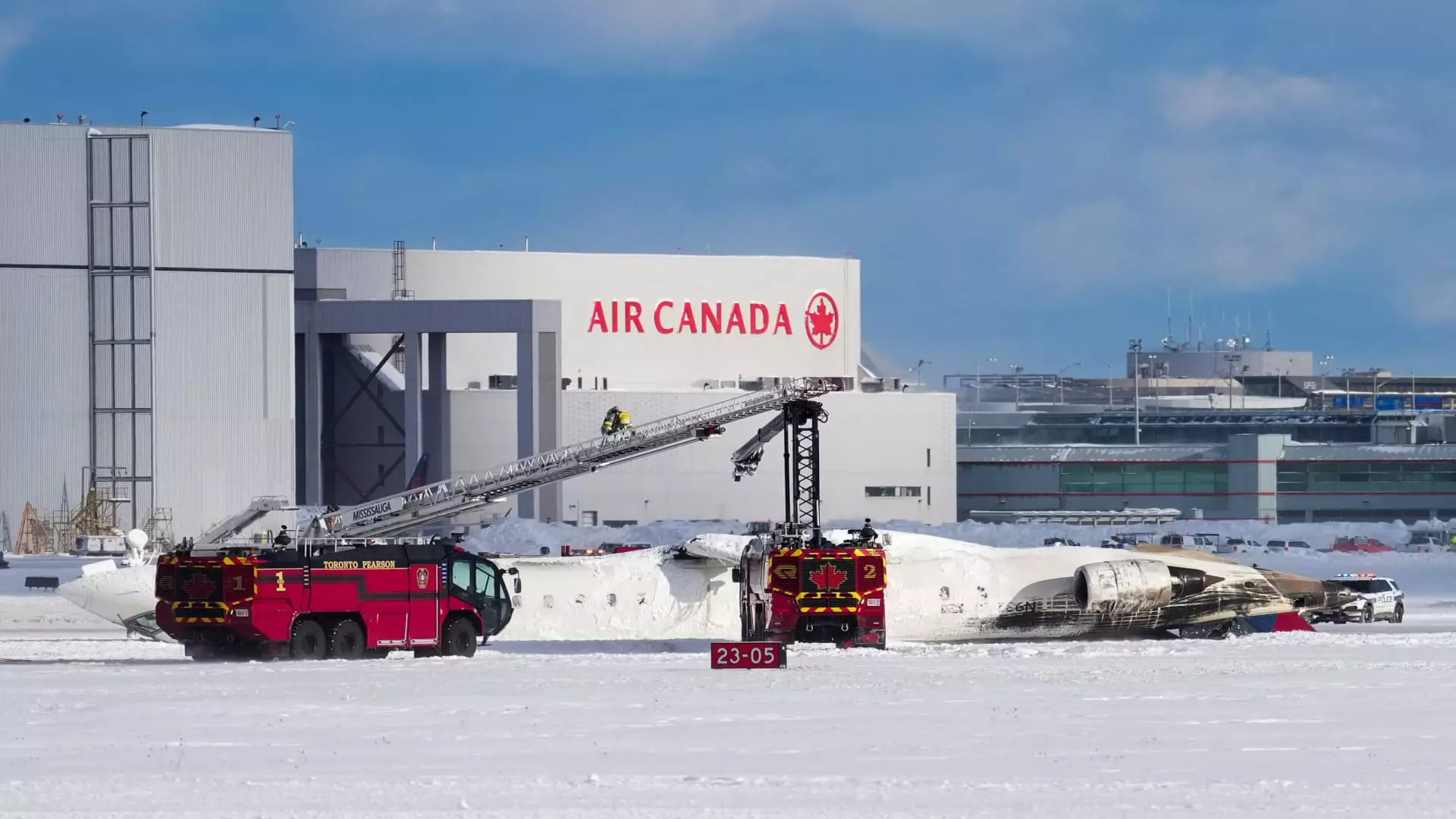On Monday afternoon, a serious incident involving a Delta Air Lines regional jet occurred at Toronto Pearson International Airport. The aircraft, a CRJ-900, was reportedly landing when it crashed, resulting in injuries to at least 15 individuals. Onboard were 80 people, including 76 passengers and four crew members, all of whom were successfully evacuated from the aircraft. However, the gravity of the situation was underscored by the fact that two individuals were airlifted in critical condition following the crash.
Emergency response teams promptly arrived at the scene after the crash at approximately 2:45 p.m. ET. The swift action taken by first responders was crucial in managing the aftermath of the incident, reflecting the importance of operational readiness in emergency situations. In light of the crash, operations at the airport were temporarily suspended, disrupting various flights. By 5 p.m. ET, operations resumed, but Delta Air Lines announced the cancellation of its remaining flights to and from Toronto for that day, showcasing the ripple effect of the crash not just on those directly involved, but also on countless travelers affected by the disruption.
Interestingly, the crash occurred under challenging weather circumstances. The Toronto region experienced heavy snowfall, with more than 8 inches reported, combined with winds reaching up to 40 mph. Such adverse weather conditions likely played a significant role in the unfolding of the incident, drawing attention to the complexities faced by pilots and air traffic controllers in managing safety during severe weather scenarios. The Toronto airport had anticipated a notably busy day, further complicating the landscape for incoming and outgoing flights.
In the wake of the crash, the Transportation Safety Board of Canada has initiated an investigation to ascertain the causes behind this unfortunate incident. The FAA also expressed their commitment to support the investigation, indicating collaboration between U.S. and Canadian authorities. This concerted effort is critical, especially following high-profile aviation incidents, as it assists in identifying potential safety improvements to prevent similar occurrences in the future.
The accident at Toronto Pearson comes on the heels of a deadly midair collision earlier this year, which resulted in the tragic loss of lives. Such incidents spotlight ongoing discussions about aviation safety and regulatory measures. Compounding this issue is the recent news regarding layoffs within the FAA, raising concerns about the availability of air traffic controllers to manage safety-critical functions. While the FAA reassured the public of their continued hiring efforts, the juxtaposition of staff reductions against recent accidents calls for scrutiny regarding the overall safety framework within U.S. airspace management.
The crash of the Delta regional jet at Toronto Pearson International Airport not only involves immediate concerns regarding those injured but also ignites a wider conversation about aviation safety, weather-related challenges, and the implications of staffing within air traffic control. It serves as a stark reminder of the complexities of modern air travel and the vital importance of ongoing vigilance in safety practices.

